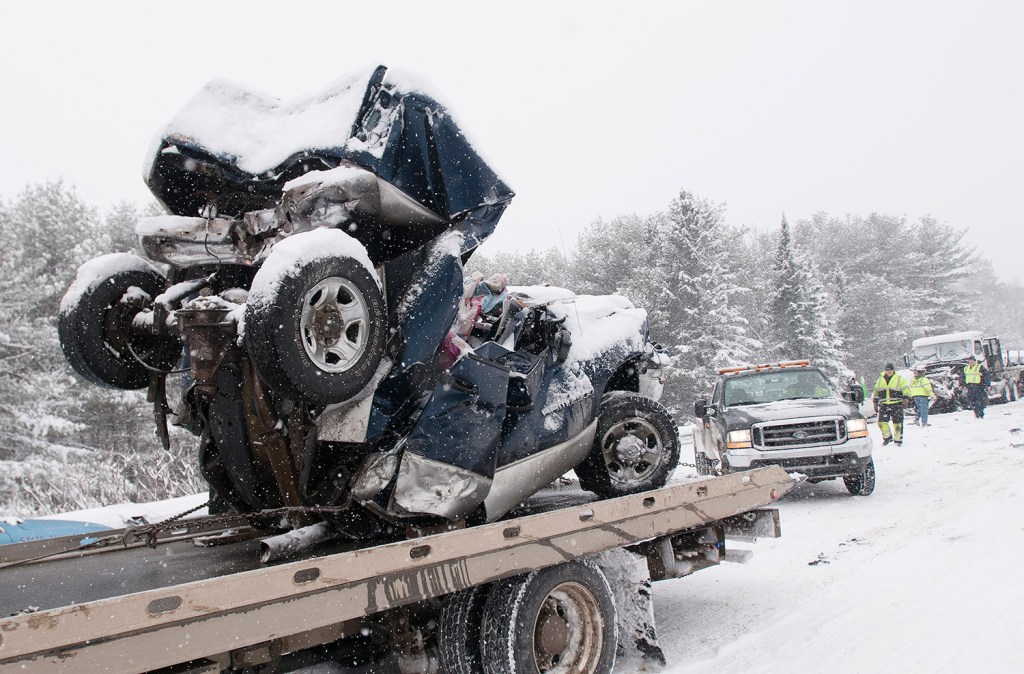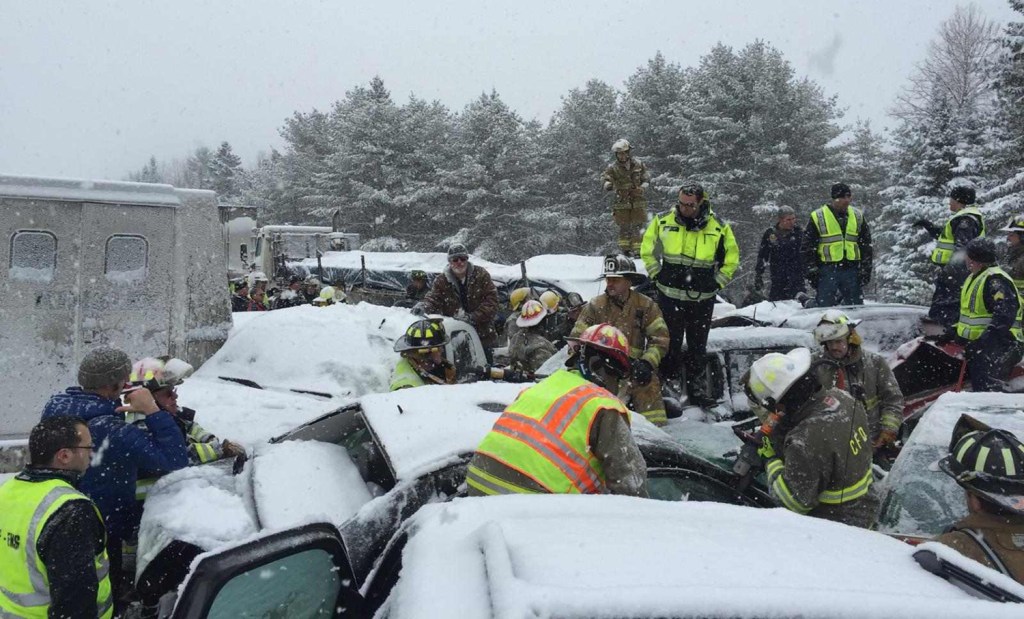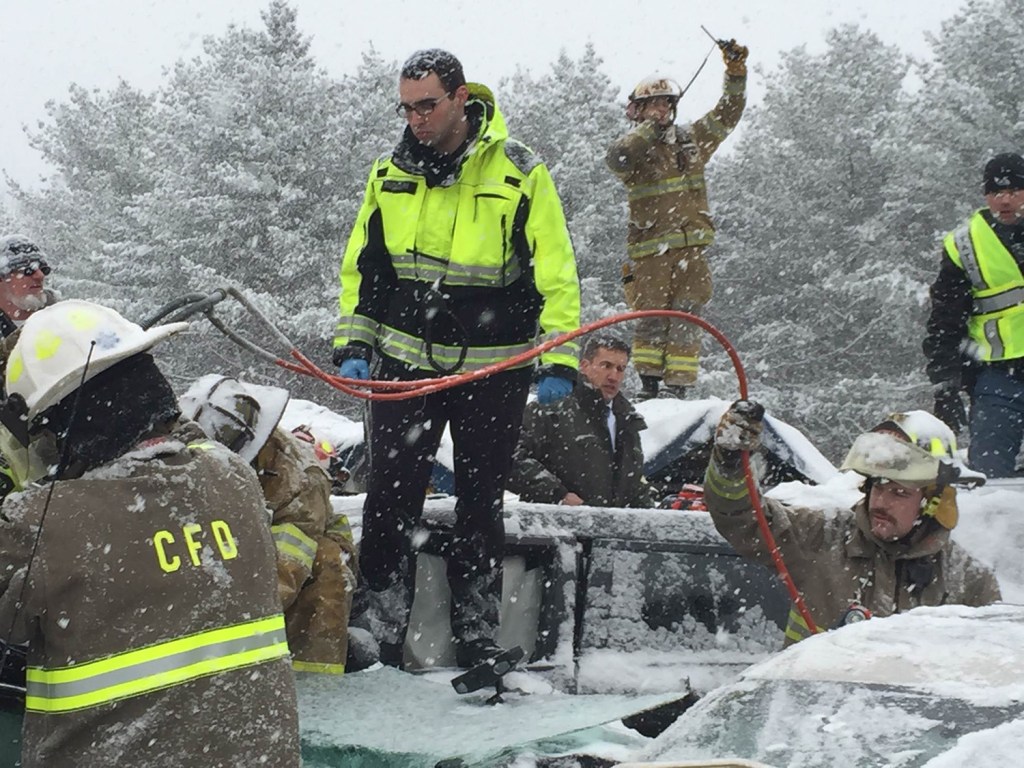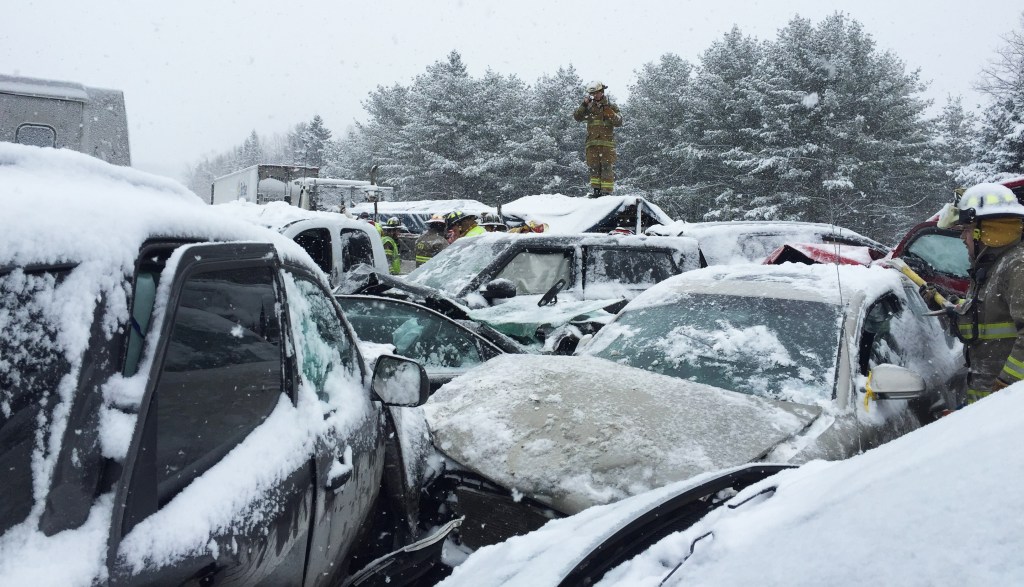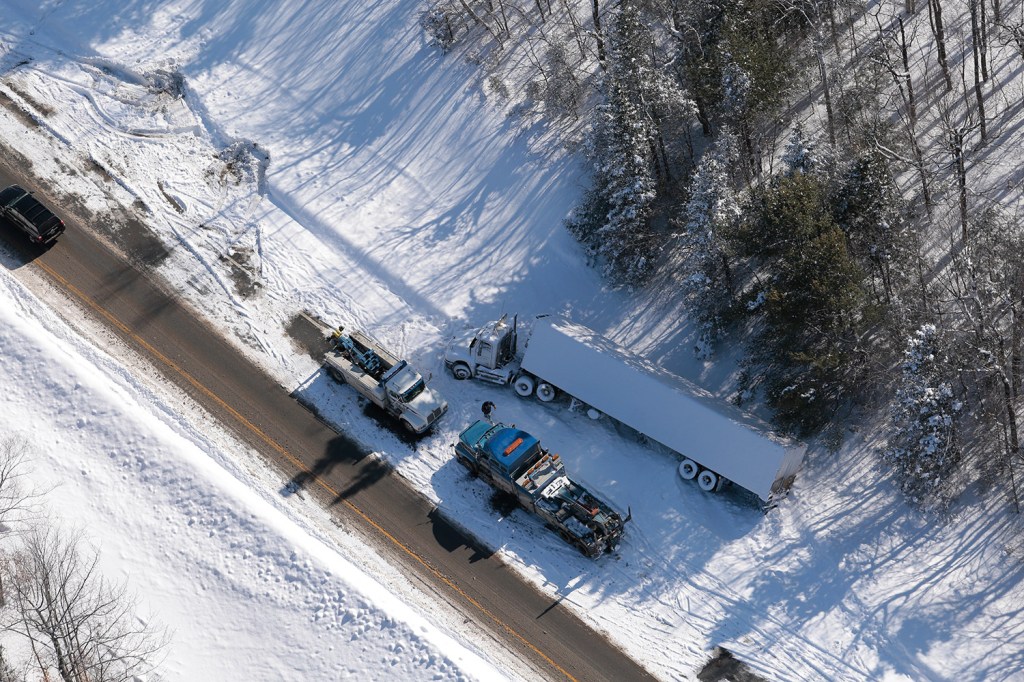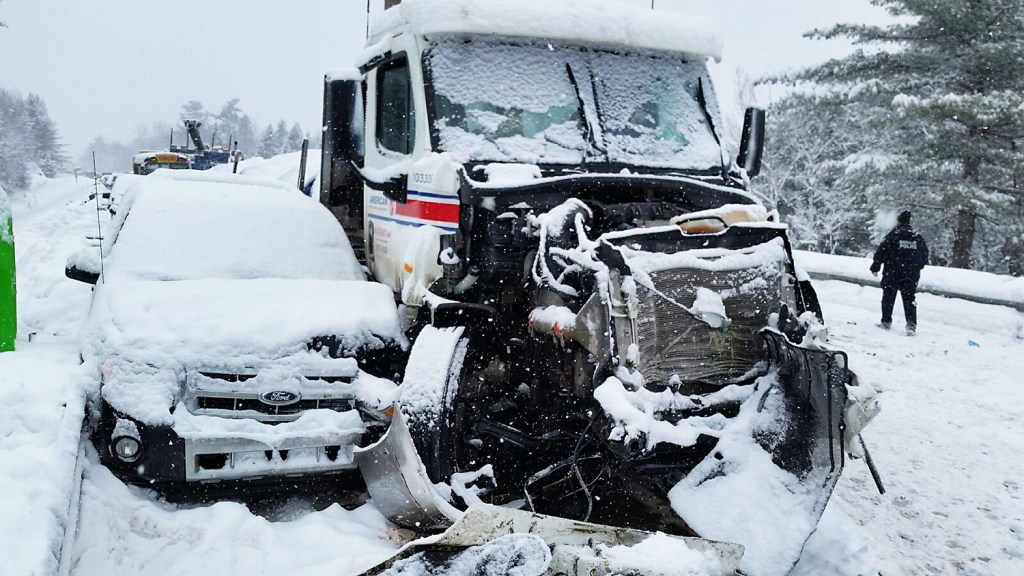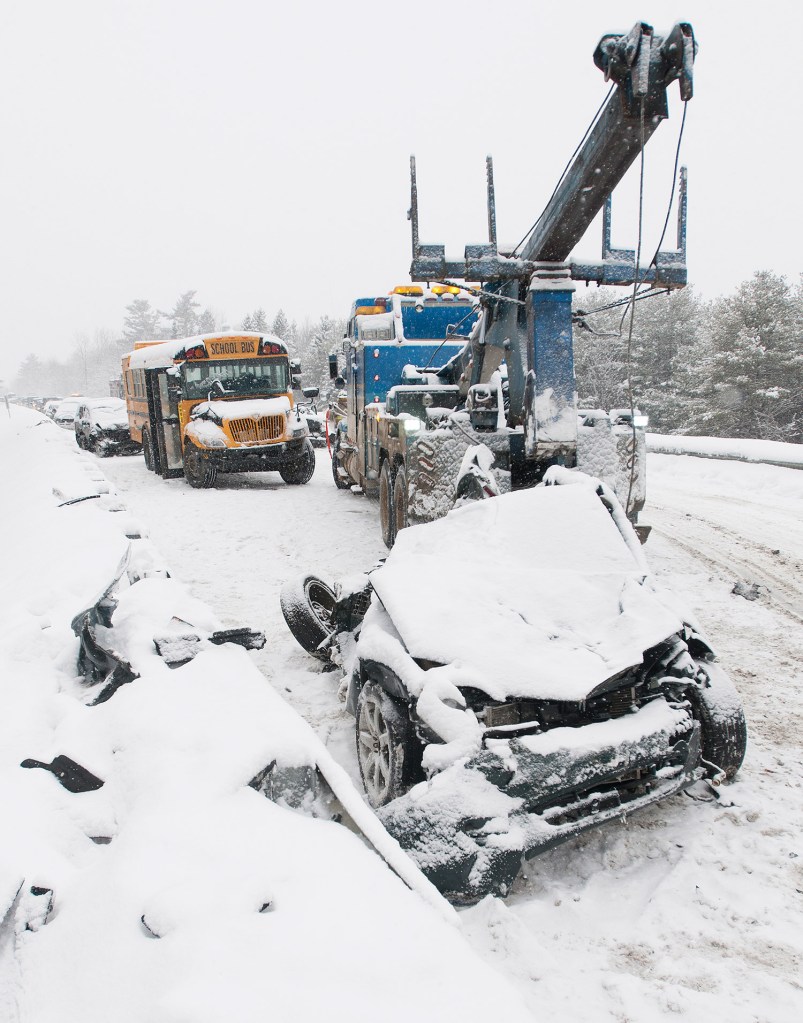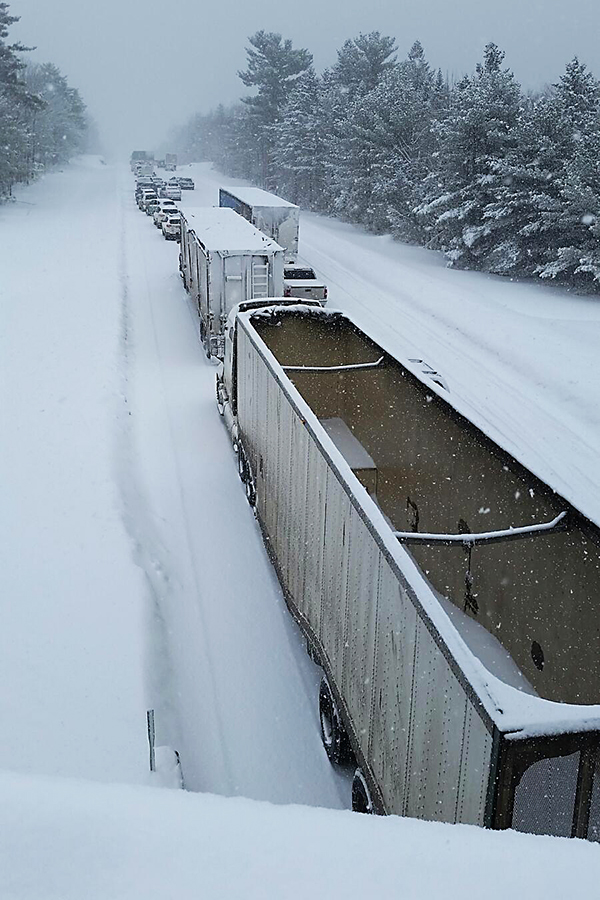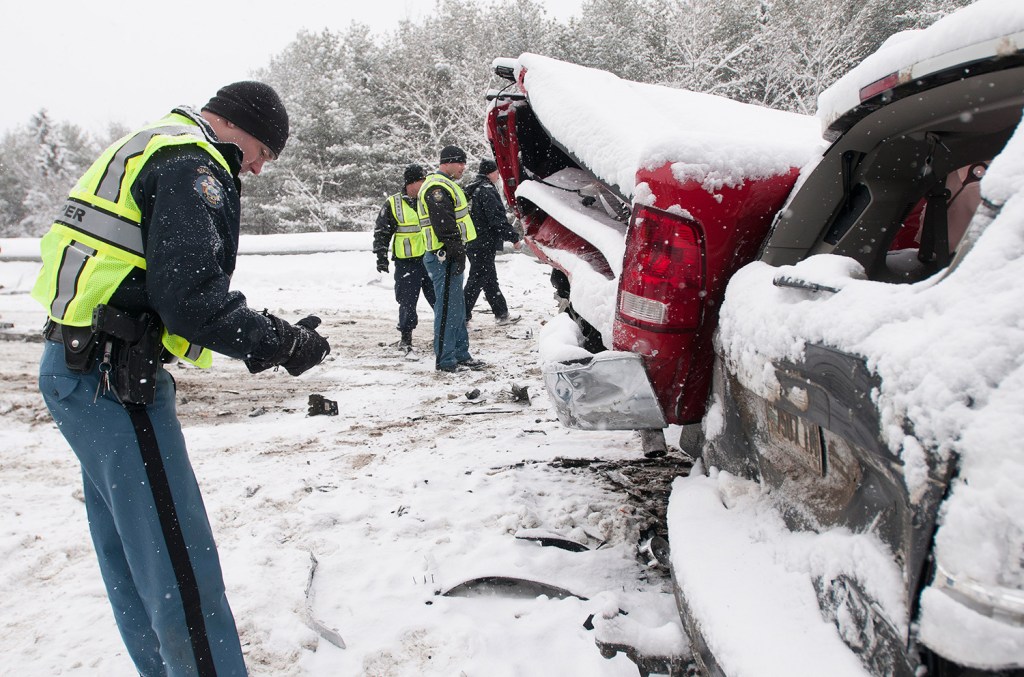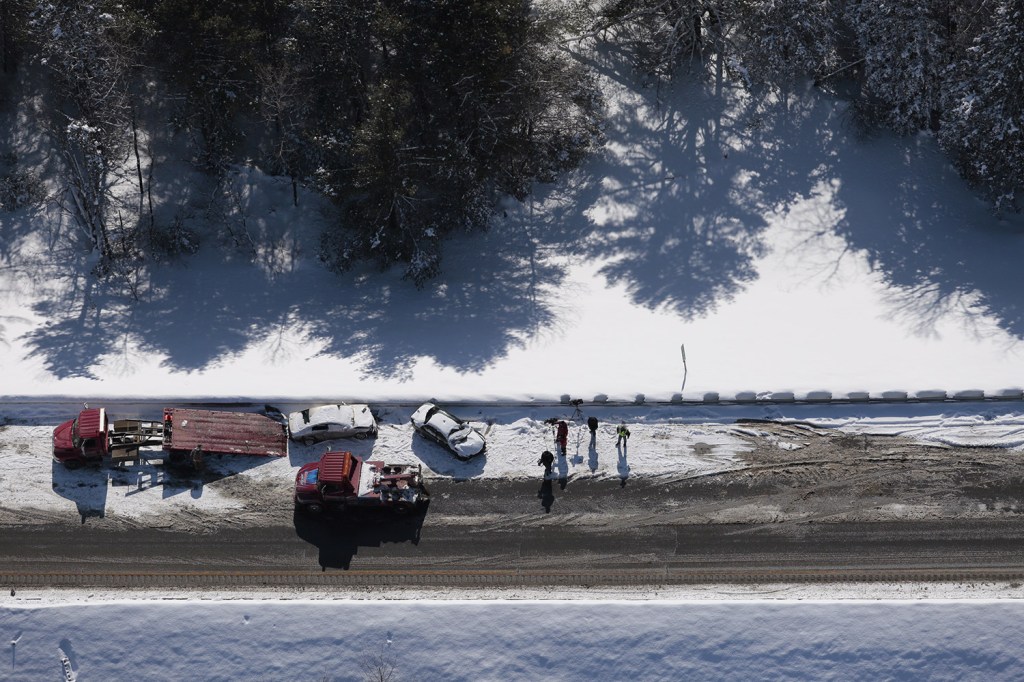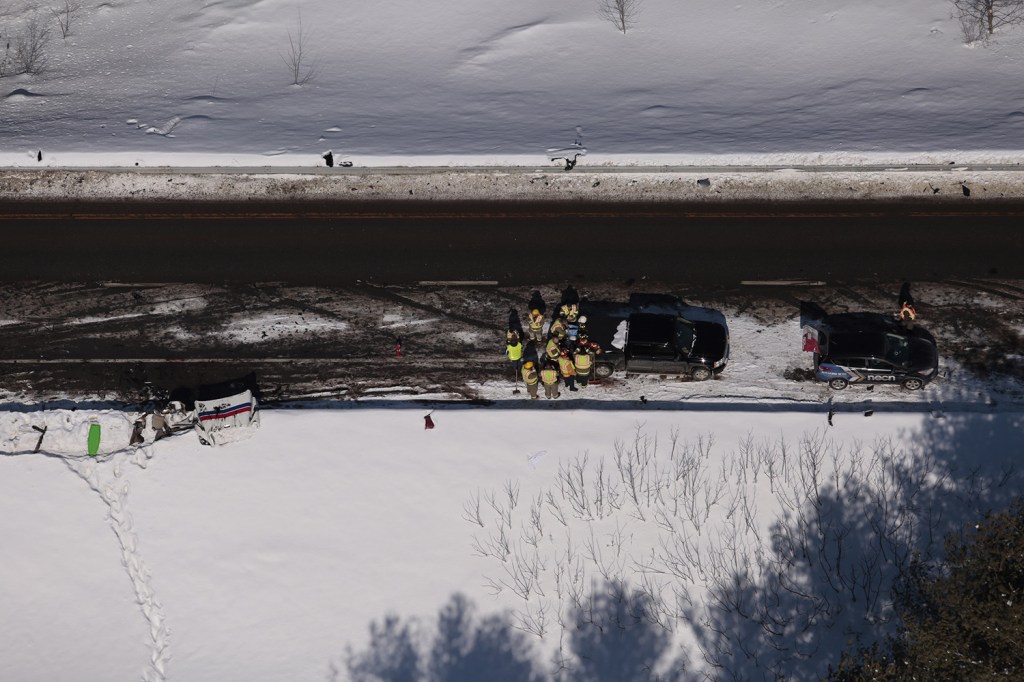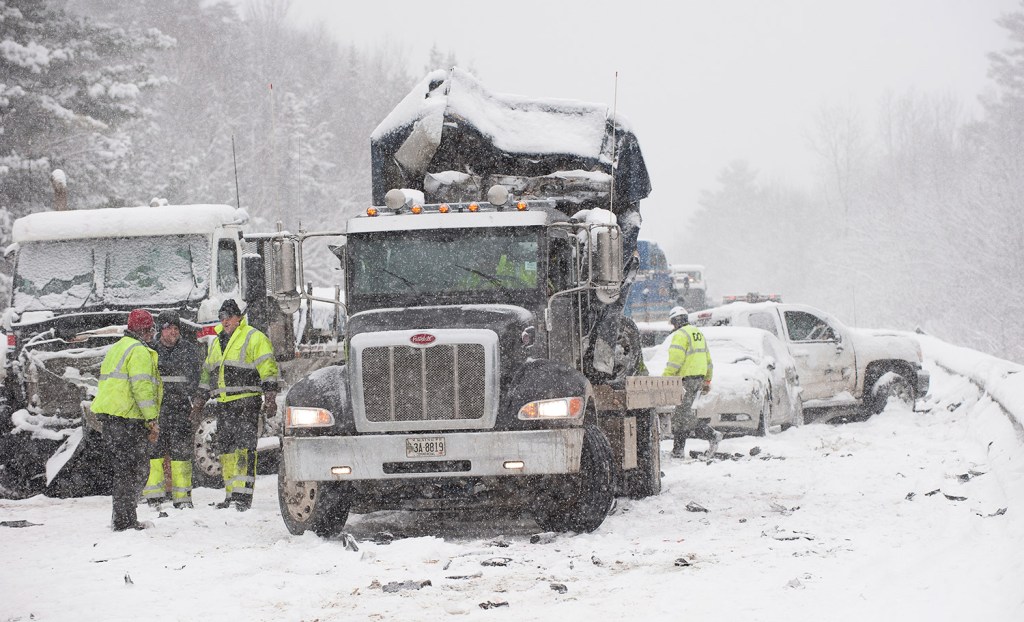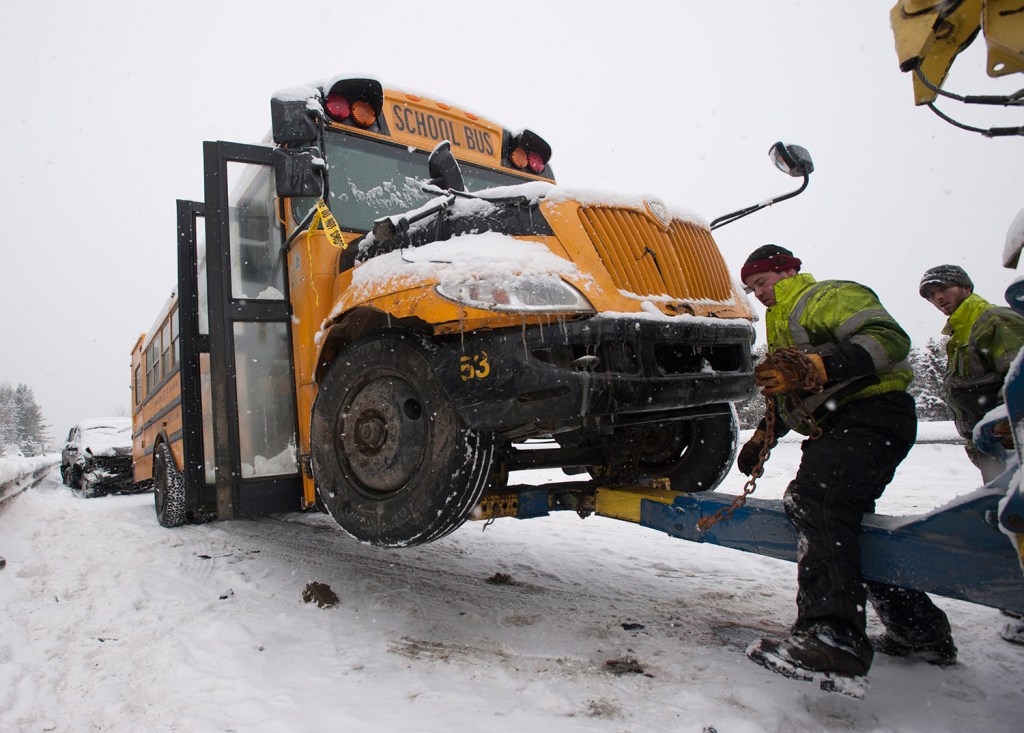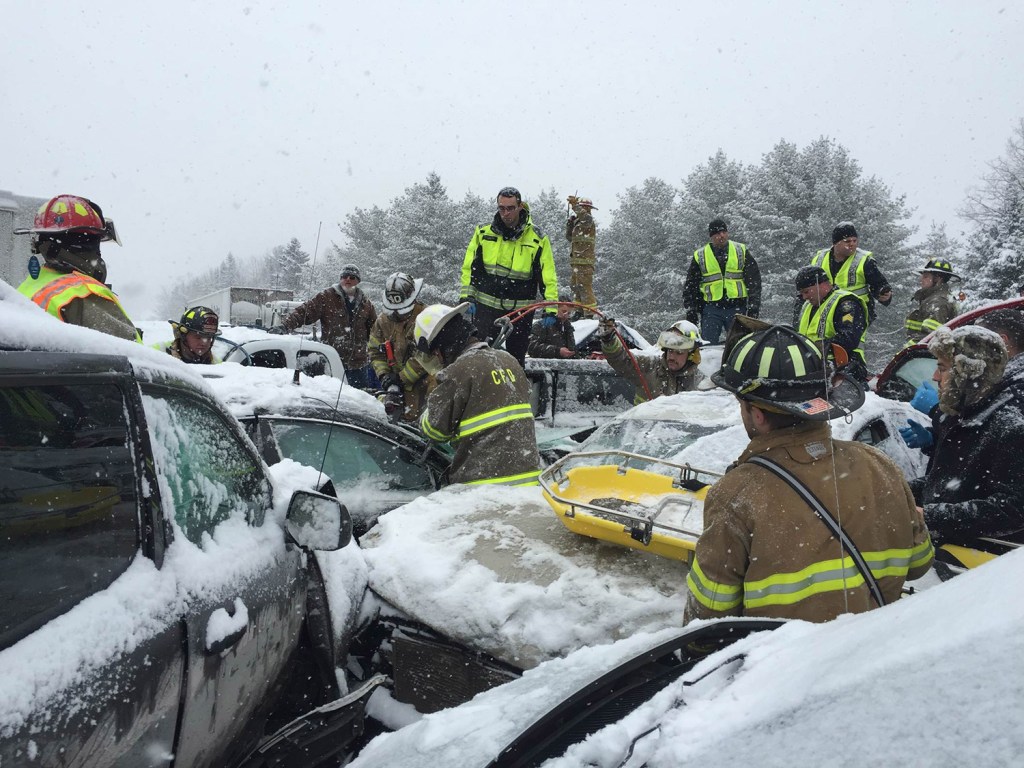The typical driver approaching the scene of a 75-vehicle pile-up on Interstate 95 last week was traveling more than 10 mph faster than the speed recommended for the snowy conditions at the time of the crash, according to data compiled by the Maine Department of Transportation.
Because of winter conditions, the suggested speed on the highway was 45 mph, indicated to motorists through flashing traffic advisories on yellow signs posted along the roadway.
Despite the warnings, the average speed of drivers in the northbound lanes near Newport on the morning of the crash was 62 mph, with a top speed of 73 mph, according to radar readings taken by the variable-speed sign posted at mile 159. The series of accidents that created the massive pileup started in Carmel, less than 20 miles away.
Most vehicles in the southbound lanes also were traveling faster than advised, according to radar readings compiled by DOT. “It’s not surprising” that some drivers speed even during poor road conditions, DOT spokesperson Ted Talbot said.
A string of collisions reported in the northbound lanes of I-95 between mile markers 168 and 172 in Carmel began at 7:30 a.m. Feb. 25 and reportedly involved 75 vehicles, believed to be the worst pileup in Maine history. Seventeen people were sent to Bangor-area hospitals with injuries, and at least 50 vehicles had to be towed from the scene.
Lt. Sean Hashey, who commands Maine State Police Troop E in Bangor, said Thursday that investigators plan to release details about the pile-up early next week, but are convinced that speed was a factor.
“We know that speed played a role in this,” Hashey said.
DOT uses the variable-speed signs, equipped with radar units and cameras, to evaluate road conditions, driver speeds and the number of vehicles on the highway, Talbot said.
There are 75 signs equipped with radar units along I-95 from Portland to Houlton, and 19 of the signs also are equipped with cameras. There are also 23 stand-alone cameras placed along the highway.
The signs were installed five to seven years ago, Talbot said. MDOT uses readings from the signs to determine how to make roads safer.
“We like to see as much as we can,” he said. The cameras do not have the capability to read or scan license plates and are not intended to be used to enforce traffic laws, Talbot added.
“They collect data constantly,” he said. The radar units record the speed of each vehicle on the roadway and produce a report every 15 minutes on the number of cars passing by the sign.
At the time of the accident on the morning of Feb. 25, the sign at mile 159, the closest northbound sign to the accident, recorded 333 vehicles in the 15-minute reporting period prior to the time of the accident. The vehicles traveled at an average speed of 62 mph, with the slowest vehicle recorded going 51 mph.
The sign at mile 173 in the southbound lane, the nearest to the beginning of the crash in Carmel, recorded an average speed of 55 mph from 219 vehicles on the road, with a top speed of 72 mph and the lowest speed at 35 mph. The southbound sign at mile 156, west of Newport, recorded 266 vehicles with a top speed of 73 mph, the lowest speed at 45 mph and a 60-mph average.
Even though drivers were speeding over the advised limit, enforcement in storm conditions is tackled differently than regular traffic violations, said state public safety spokesperson Stephen McCausland.
Unlike speed limits posted on white signs, the yellow variable-speed signs are only advisories, McCausland said.
“They are simply that. They are not law,” he noted. “But when they start flashing, there’s a good reason for it.”
Troopers sometimes pull drivers over if they are driving recklessly or unsafely during a storm, but officers are often busy aiding people who have been in accidents and aren’t necessarily prioritizing traffic enforcement, Hashey said.
Moreover, troopers also have to make a determination about whether performing a traffic stop in poor weather is more likely to create a hazard than help, Hashey added.
“It really comes down to the trooper’s discretion to address that speeding violation,” Hashey said. “We are trying to prevent crashes.”
Maine DOT doesn’t think it could have done anything else to avoid last week’s pileup, Talbot said Thursday. Because of the gap between the crews’ sweeps of highway segments, snow and ice has time to build up, and road conditions vary considerably during a winter storm, Talbot said.
According to an event summary released by the department, light snow flurries were reported in the Carmel area around 3 a.m. Feb. 25, about an hour before the first crew member signed in to the DOT lot in Plymouth. Shortly before 5 a.m., the crew supervisor asked for the flashing speed limit signs to be turned on and reported snow on the roadway with a light snow falling. The first crews started clearing the right and left shoulders of the northbound lanes from Plymouth to Carmel beginning at 5:30 a.m. According to the report, they were not applying salt to the travel lanes, following standard procedure for dry and blowing conditions. An hour and a half later, at 7 a.m., the truck on the left began its second pass on the road from Plymouth to Carmel followed by the truck on the right at 7:15 a.m. Five minutes later, at 7:20 a.m., the crew supervisor noted slippery roads and told crews to begin applying salt. At 7:30 a.m. the left truck encountered the multi-vehicle accident.
“We don’t see anything we necessarily needed to do differently,” Talbot said.
Send questions/comments to the editors.


